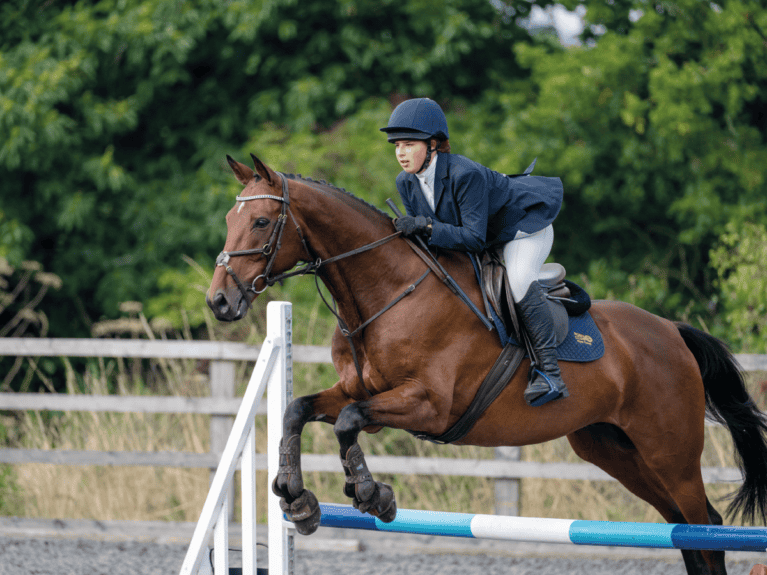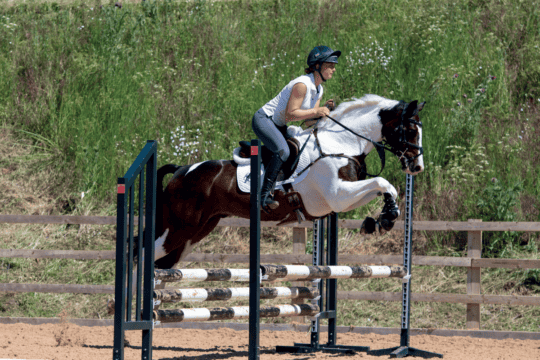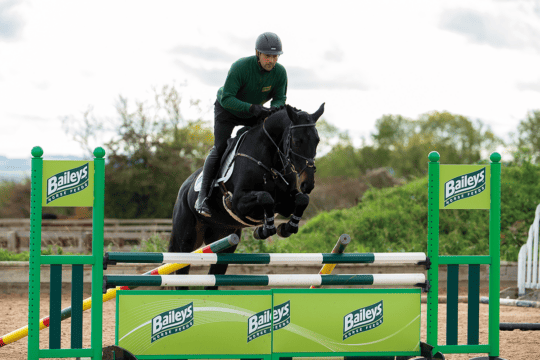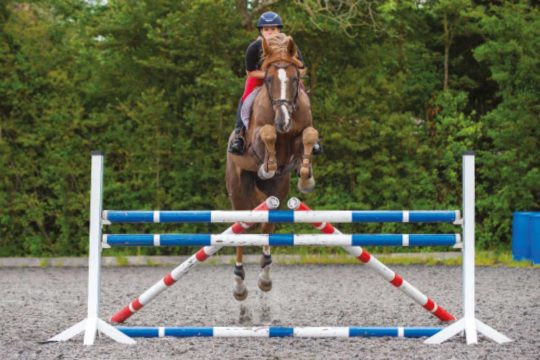-
Riding Schooling and Training
-
Health and Veterinary
-
Management
-
Mind Matters
-
Buying and Selling
-
Insurance Advice
FAQs
Understanding related distances will help you jump more clear rounds, and we’re here to help

If you’ve heard people talking about related distances, but you’re not entirely sure what they’re all about, then you’re in the right place.
In simple terms, related distances refer to two jumps set more than two and fewer than six strides apart. Fences set one or two strides apart are known as doubles and if there are six or more strides between them, they’re not considered to be a related distance.
Do you want to be one step ahead of the game when tackling these obstacles? If so, read on. Our seven secrets will help you with everything from learning to measure the distances on foot to improving your horse’s technique at home.
Secret one
Perfect the art of seeing a stride
How well you approach the first element of your related distance can hugely affect your performance over the second fence, and being able to see a stride is key to a better approach.
There are several exercises you can use at home to develop your ability to see a stride, such as using ground poles and canter poles, and working on the quality of your horse’s canter.
Or, why not refer back to the May 2023 issue of H&R, for our six secrets to seeing a stride?
Secret two
Know your distances
When walking a course, it’s essential to know how many strides your horse will take between fences, and this includes allowing room for landing and taking off, too.
The average horse has a canter stride length of 12ft, plus you’ll need to allow around 6ft for both landing and take-off (this distance can be affected by the height of the jump and your horse’s technique). Therefore, if a related distance is 60ft apart, it’ll be a four-stride distance (12ft for landing and take-off and 48ft equates to four non-jumping strides).
Top tip
When counting canter strides between poles and fences, don’t count the landing stride. Start counting from the moment your horse lands after the first jump.
Did you know?
It’s possible to add in or take out a stride with longer related distances, depending on your horse’s stride length and jumping style.
Secret three
Learn to walk 3ft steps
If you can walk strides of 3ft in length you’ll know you’re able to walk four paces for each canter stride your horse takes and two paces for each take-off and landing. This will help you calculate the distances between fences during your course walk.
A good way to practise this is to place a 12ft pole on the ground, putting three pieces of coloured tape at 3ft distances along the pole. Then you’ll easily be able to walk four equal paces along it, using the markers to help you.
Finally, try removing the tape and walking the distances without markers.

Secret four
Work on adjustability in canter
On more technical courses you might find tighter turns, fences needing to be jumped at an angle or unusual distances between two fences (such as four and a half strides).
While this might seem like it’s trying to catch you out, it can help you make up time by lengthening the horse’s canter or jumping a more direct line between fences.
Practise jumping on an angle and work on his canter adjustability at home. Try placing two poles on one of the long sides (set 20m or more apart) then ride over them in a good jumping canter, noting how many strides your horse takes between them.
Come over the poles again in a shorter canter, aiming to add in an extra stride, then ride bigger for one less. Soon you’ll be able to adjust the pace by several strides.
Secret five
Know what can affect canter striding
Top riders will consider other factors when walking a course, so they know where they might need to push on a bit or take a rein check.
Here are some things that might affect the length of your horse’s striding out on a course.
The stride can become longer if…
- a related distance is built on a downward slope
- the ground is particularly springy
- you’re jumping towards the exit or lorry park
The stride might be shortened by…
- a related distance on an uphill slope
- deep ground
- jumping away from the direction of the exit or lorry park
Did you know?
For any horse to jump really well, he needs plenty of energy, a good rhythm, straightness and balance, so work on these elements when training at home.
Top tip
Practise dog-legs at home, starting over two poles on the ground and progressing to small fences until you and your horse can jump them well.

Secret six
Learn to master dog-legs
Related distances can be set on a dog-leg, where a turn has to be made between the two fences, and this can cause issues if you don’t ride the correct lines.
When you walk the course, you’ll need to walk straight after the first fence to allow for landing time, then work out where you need to turn in order for it to be smooth and give you time to ride a straight approach towards the second element.
Remember, with dog-legs, that both fences are designed to be jumped in the centre at right angles to the jump.
Top tip
Help your horse to land on the correct lead for the second part of your related distance by turning and looking into the direction you’re going, without leaning over.
Secret seven
Watch others
When you get to a competition, assuming you’re not first to go, watch some of the other competitors jump their rounds so you can find out how the course is riding.
This will give you a chance to see if the related distances are jumping as you thought when you walked the course or whether horses are taking a stride less or adding one in. Then, when it comes to your round, you’ll know exactly where you need to push on or hold back a little.















